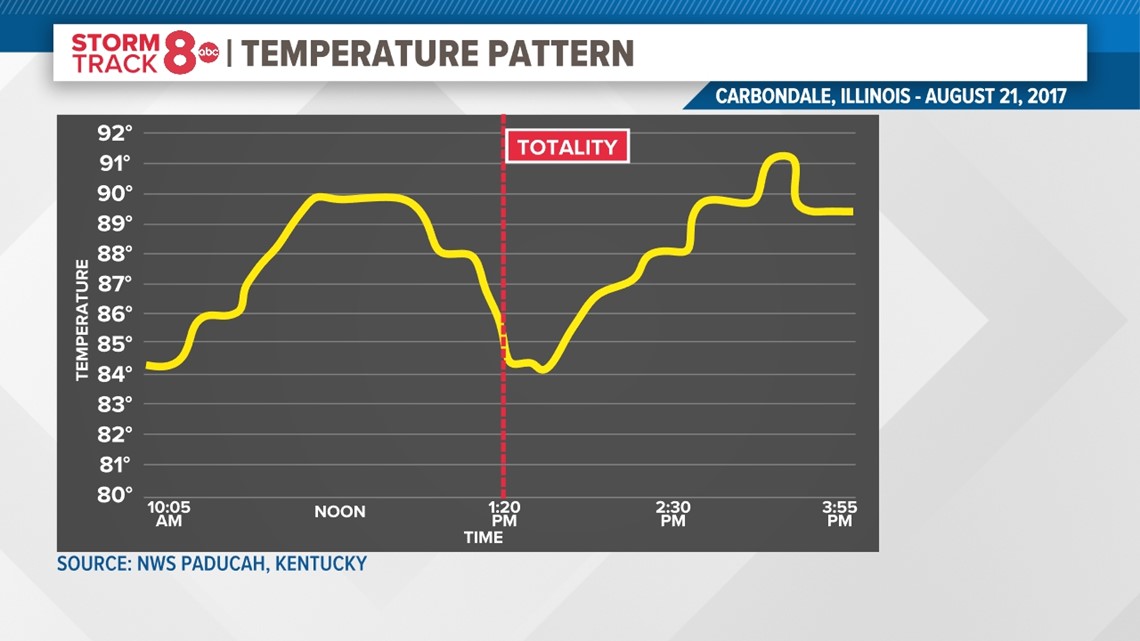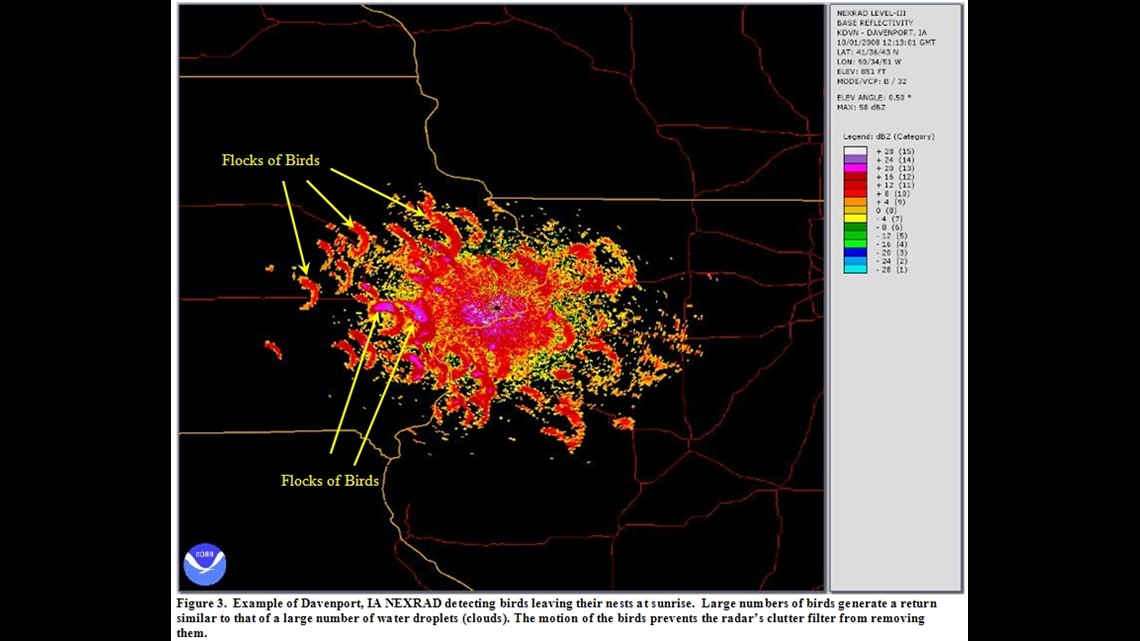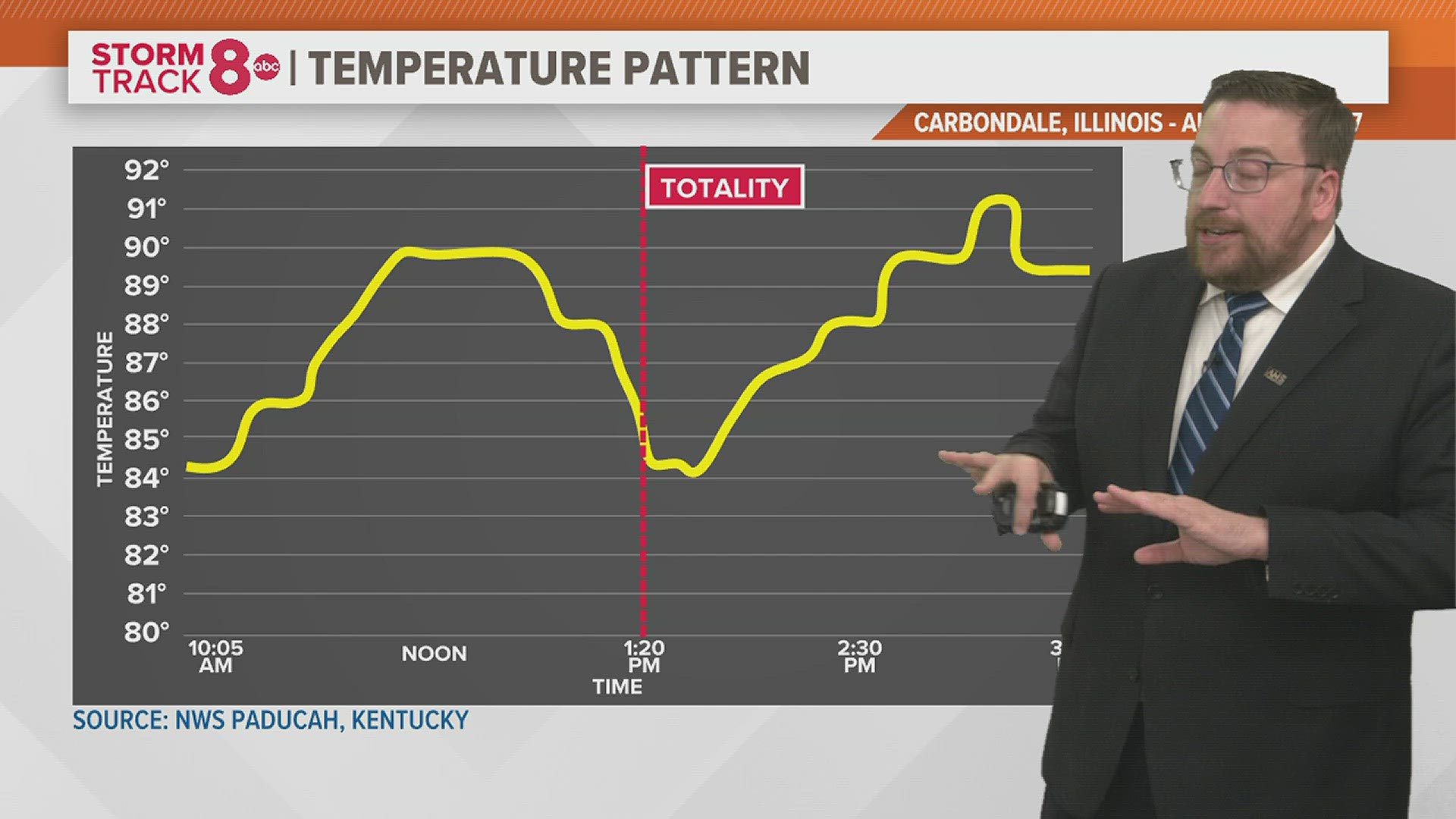MOLINE, Ill. — The Total Solar Eclipse of 2024 will leave many in awe across the United States and the world. Anyone observing it will notice more than just darkness. Animal behavior will change, and it will even have subtle impacts on the weather, too! While most of the weather-related impacts will be small, they are still neat to observe! Here's how the upcoming eclipse will produce a change to a few of our weather factors.
A quick drop in temperatures for some
Areas in the path of totality, including Carbondale, Illinois, will see the most dramatic temperature change, especially if skies are clear during the eclipse. During the 2017 eclipse, temperature data taken from this location showed a marked decrease during totality, around 1:20 pm. Before the eclipse, temperatures were well into the upper 80s to near 90 degrees. During totality, the temperature fell to around 84 degrees, then began rising again once the eclipse concluded.


The biggest temperature changes will be noticeable in the middle part of the country, where the daytime humidity values tend to be lower compared to coastal areas. The drier air tends to allow for more play in temperature readings, especially if the skies are clear.
Even though the Quad Cities region is expected to experience nearly 91% coverage of the sun by the moon, we will likely still see a bit of a temperature drop if the right conditions are present.
Change in the wind
As we've discussed in Storm Track 8 University, wind is driven by a change in temperature which is driven by a change in pressure. Research from measurements taken from the 2017 eclipse showed a decline in wind speeds and even a change in wind direction during totality. This is referred to as an "eclipse wind".
The lack of direct sunshine allows temperatures to cool near the ground, keeping warm air from rising. That lack of rising motion likely leads to a drop in wind speed and a change in direction.
Also, check this out
If you are an avid Doppler radar hawk, you know that sometimes radar returns can pick up things like birds and insects.


This may be the case, especially within areas that experience totality, where bird activity and even bat activity are observed on radar images. The above example shows how Doppler radar is indeed capable of detecting flocks of birds. Something to keep an eye on as we approach totality!

